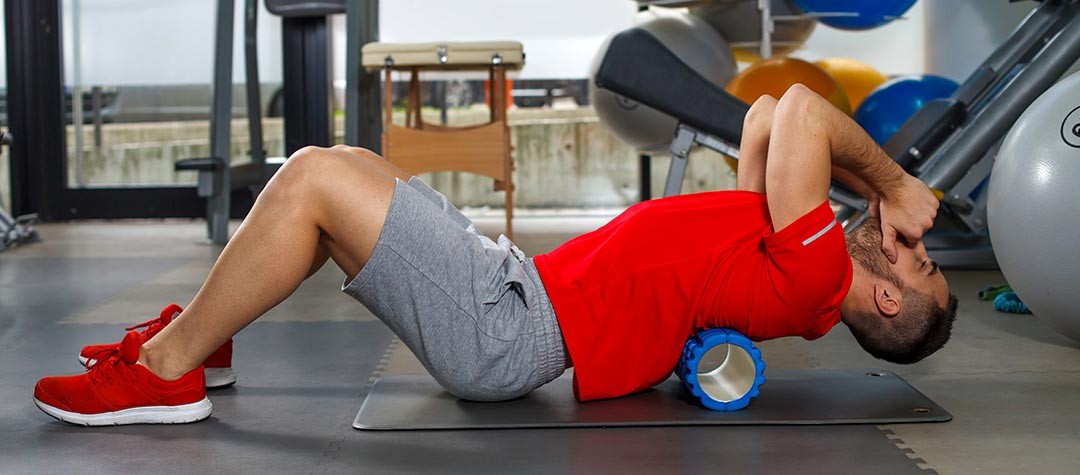Check out the kit that can keep your muscles healthy and happy and help you to rebound faster.
Contrary to popular belief amongst many runners, it’s not the monster sessions that get you into shape but rather consistency of training. Banking week after week of solid training is probably the single most important factor if you are looking to improve your running so it’s important to keep injuries at bay and to recover well between workouts.
1. Foam roller
Stretching alone is not always enough to release muscle tightness so you may benefit from some additional help in the form of a foam roller. Foam rollers, when used correctly, can release tightness and adhesions that build up between the muscles and the fascia (the layer of connective tissue which surrounds the muscle or group of muscles).
Post run rolling can help to restore length and range of movement of muscles, therefore decreasing the risk of injury.
In fact foam rolling can form a valuable part of your warm up and cool down routine. Pre-run rolling increases blood flow and releases muscle tightness that can inhibit good running form, whilst post run rolling can help to restore length and range of movement of muscles, therefore decreasing the risk of injury.
Some foam rollers, such as ‘The Grid’ have a contoured surface in order to mimic the feel of a human hand for deep tissue massage. But as you can imagine this isn’t always too pleasant, particularly if your IT bands are involved!
2. Ice pack
This is a must-have bit of kit for every runner. A reusable ice pack is ideal for helping to reduce inflammation in the acute phase of injury. Follow the RICE (Rest, Ice, Compression, Elevation) principle for best results and just remember to keep the ice pack in your freezer so it’s ready for use post-run.
3. Blister plasters
Blisters are unfortunately an occupational hazard as a runner and a seemingly small patch of broken skin can cause much misery and suffering. If you are prone to developing blisters in certain areas then it’s certainly worth investing in some blister plasters as well as investigating the cause of the unwanted friction.
4. Tennis ball/golf ball
A tennis ball is perfect for a bit of DIY physio or self-inflicted torture! You can roll on it to get into specific tight areas that are difficult to target with a foam roller and it’s a great form of trigger point release, particularly for gluts and hamstrings. A golf ball meanwhile, is fantastic for helping to release the plantar fascia on the sole of the foot.
5. Kinesiology tape
Most runners will be familiar with the brightly coloured strips of tape worn by many from weekend warriors to elites, but what does it actually do? Kinesiology tape is applied along muscles, ligaments and tendons and can be used to change muscle tone, assist with lymphatic drainage, correct movement patterns and improve posture. The tape creates neuromuscular feedback that helps the muscles to fire effectively, making it ideal to wear whilst recovering from minor injuries and niggles.
6. Compression gear
It may not look particularly fetching or attractive, but post-training is the ideal time to don your compression gear. The evidence continues to point towards compression apparel being most effective when worn after exercise rather than during it, according to a research review published in the International Journal of Sports Physiology and Performance .
The evidence continues to point towards compression apparel being most effective when worn after exercise rather than during it...
Numerous studies have shown that compression gear can reduce the severity and duration of delayed onset of muscle soreness, increase venous return from the lower legs and enhance lactate removal. It is thought that the pressure exerted from compression apparel reduces tissue swelling and therefore enhances recovery, so pull on your compression socks or tights and put your feet up post-training.
7. Epsom salts
‘Epsom salt’ is the common name for magnesium sulfate and has long been suggested as a recovery tool for tired muscles. Many health benefits have been cited from taking a bath in Epsom salt, including soothing muscle pain, reducing swelling, and increasing the body’s stores of magnesium.
As far as scientific evidence is concerned, the jury is still out on this one but there’s very little harm in treating your muscles to a nice soak in a warm bath, particularly as the magnesium will be readily absorbed through the skin.














